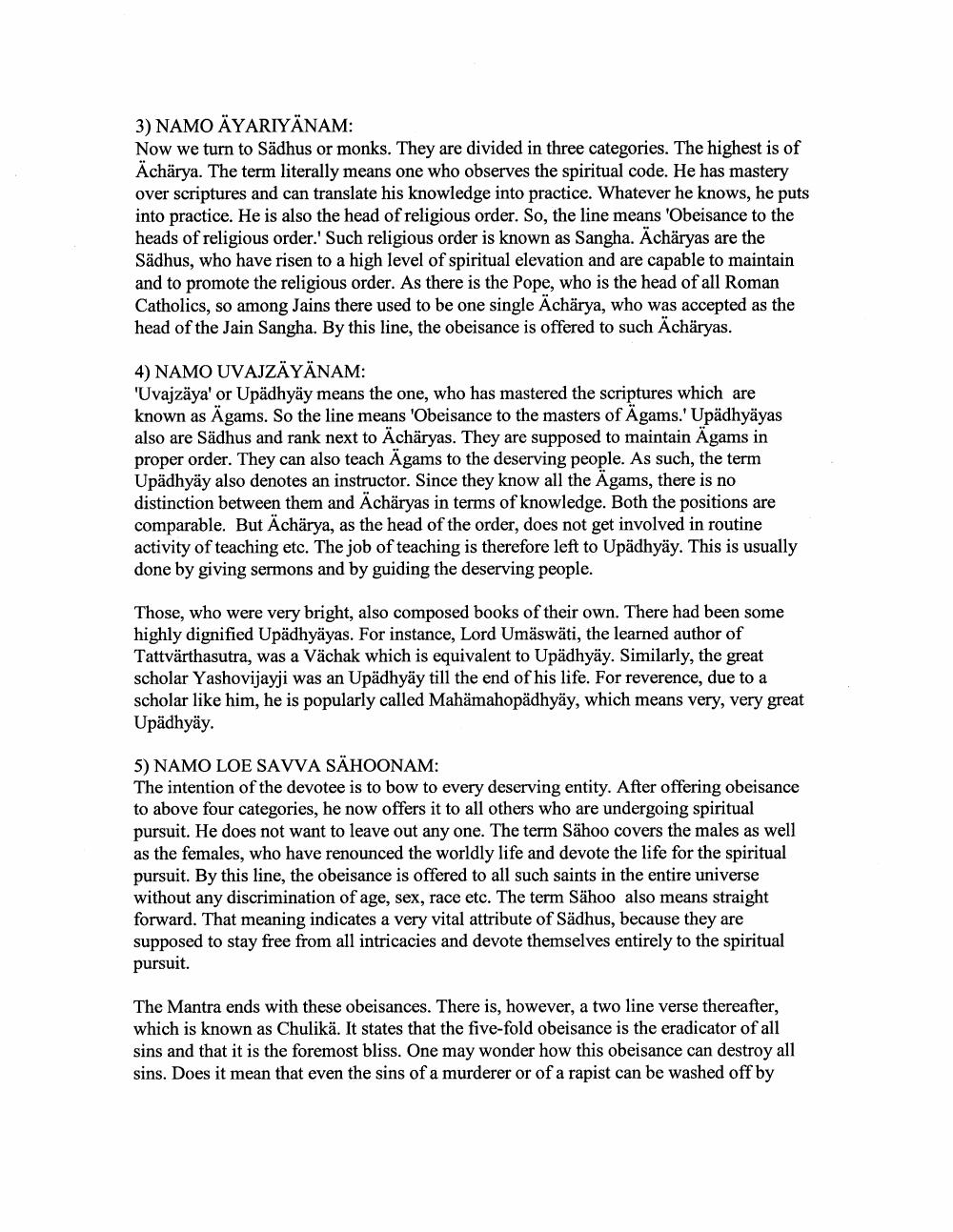________________
3) NAMO ÄYARIYÄNAM: Now we turn to Sädhus or monks. They are divided in three categories. The highest is of Achärya. The term literally means one who observes the spiritual code. He has mastery over scriptures and can translate his knowledge into practice. Whatever he knows, he puts into practice. He is also the head of religious order. So, the line means 'Obeisance to the heads of religious order.' Such religious order is known as Sangha. Acharyas are the Sädhus, who have risen to a high level of spiritual elevation and are capable to maintain and to promote the religious order. As there is the Pope, who is the head of all Roman Catholics, so among Jains there used to be one single Acharya, who was accepted as the head of the Jain Sangha. By this line, the obeisance is offered to such Ächäryas.
4) NAMO UVAJZÄYÄNAM: 'Uvajzäya' or Upadhyay means the one, who has mastered the scriptures which are known as Agams. So the line means 'Obeisance to the masters of Agams.' Upadhyayas also are Sädhus and rank next to Acharyas. They are supposed to maintain Agams in proper order. They can also teach Agams to the deserving people. As such, the term Upadhyay also denotes an instructor. Since they know all the Agams, there is no distinction between them and Acharyas in terms of knowledge. Both the positions are comparable. But Ächärya, as the head of the order, does not get involved in routine activity of teaching etc. The job of teaching is therefore left to Upadhyay. This is usually done by giving sermons and by guiding the deserving people.
Those, who were very bright, also composed books of their own. There had been some highly dignified Upadhyayas. For instance, Lord Umäswäti, the learned author of Tattvärthasutra, was a Vächak which is equivalent to Upadhyäy. Similarly, the great scholar Yashovijayji was an Upadhyay till the end of his life. For reverence, due to a scholar like him, he is popularly called Mahämahopädhyay, which means very, very great Upadhyay.
5) NAMO LOE SAVVA SÄHOONAM: The intention of the devotee is to bow to every deserving entity. After offering obeisance to above four categories, he now offers it to all others who are undergoing spiritual pursuit. He does not want to leave out any one. The term Sähoo covers the males as well as the females, who have renounced the worldly life and devote the life for the spiritual pursuit. By this line, the obeisance is offered to all such saints in the entire universe without any discrimination of age, sex, race etc. The term Sähoo also means straight forward. That meaning indicates a very vital attribute of Sädhus, because they are supposed to stay free from all intricacies and devote themselves entirely to the spiritual pursuit.
The Mantra ends with these obeisances. There is, however, a two line verse thereafter, which is known as Chulikä. It states that the five-fold obeisance is the eradicator of all sins and that it is the foremost bliss. One may wonder how this obeisance can destroy all sins. Does it mean that even the sins of a murderer or of a rapist can be washed off by




